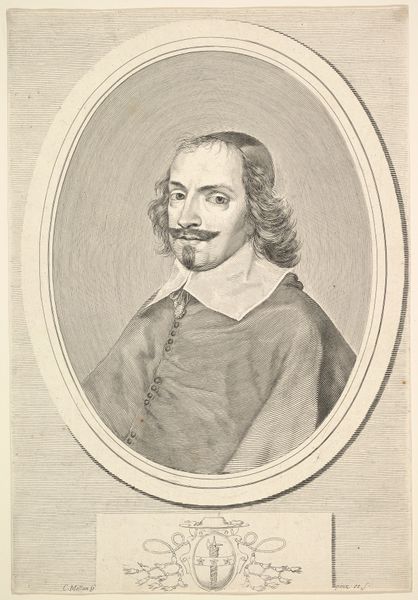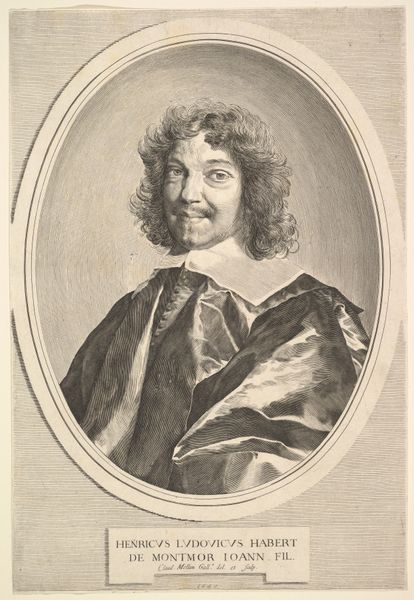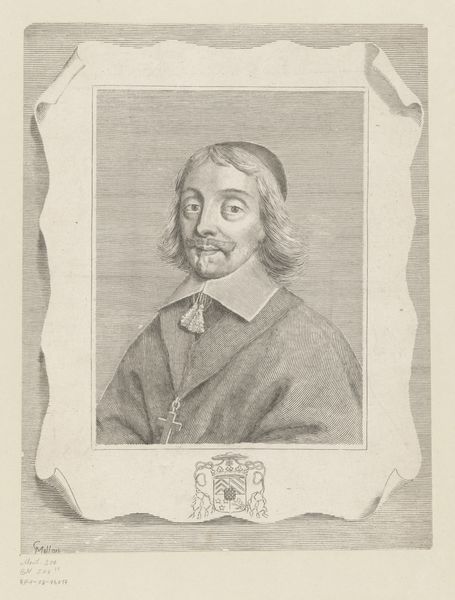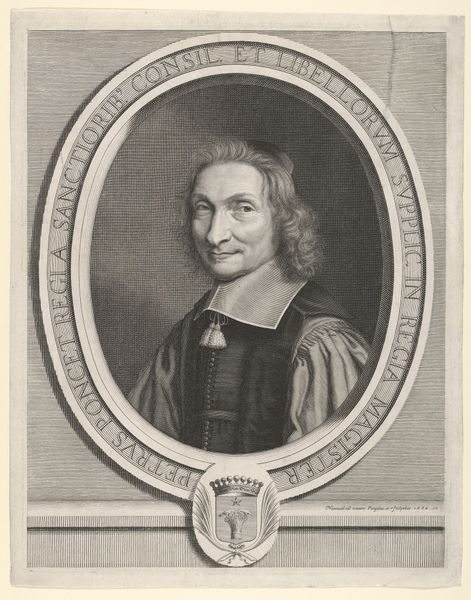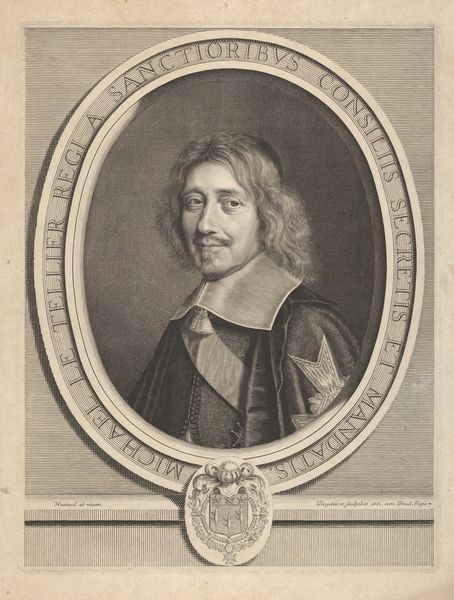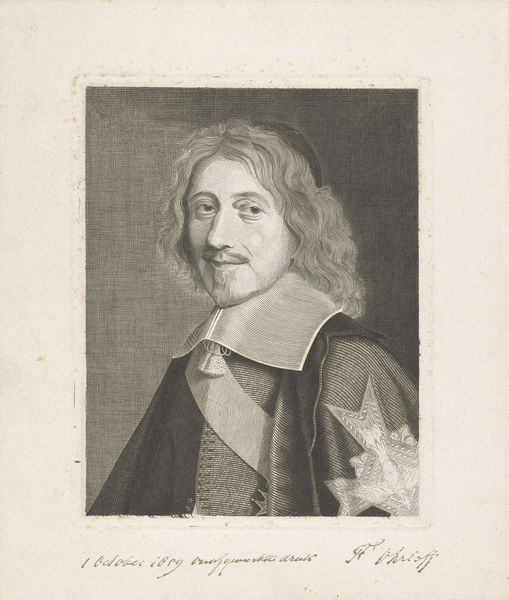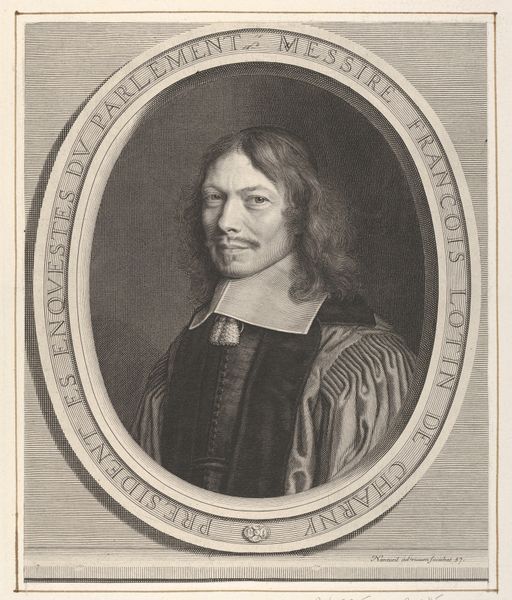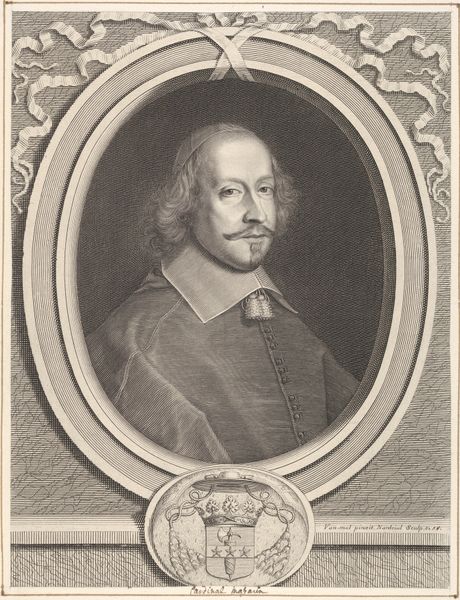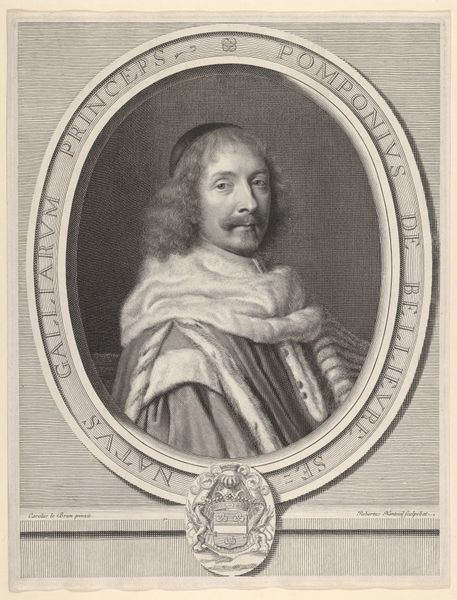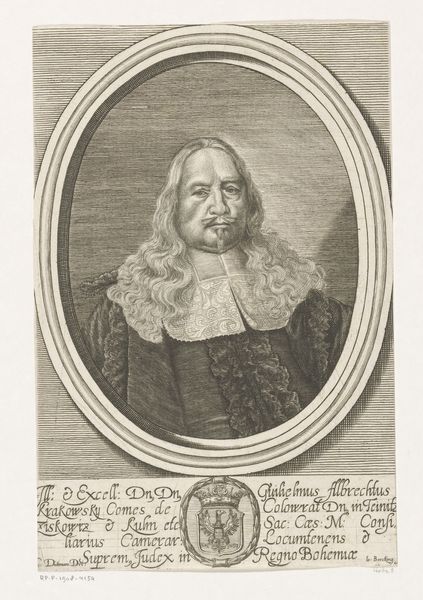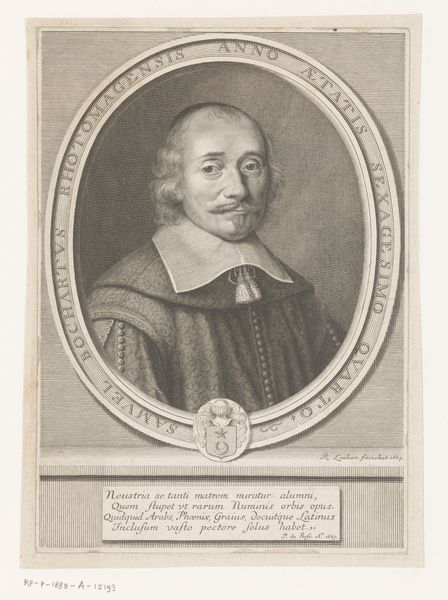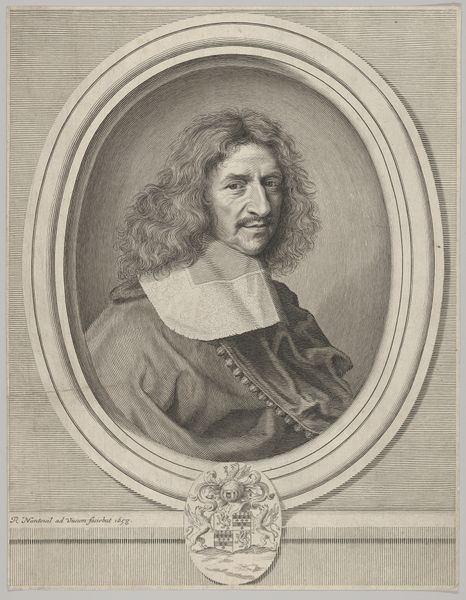
engraving
#
portrait
#
baroque
#
line
#
academic-art
#
engraving
Dimensions: height 339 mm, width 254 mm
Copyright: Rijks Museum: Open Domain
Editor: Here we have Claude Mellan's "Portret van Antonin Dreux d'Aubray," dating somewhere between 1608 and 1688, currently residing in the Rijksmuseum. It's an engraving, and I'm really struck by the incredible detail achieved solely through lines. What jumps out at you about this piece? Curator: For me, it's the fascinating insight into 17th-century printmaking. Mellan pushed the boundaries of the engraving process. We can see how he manipulates the burin to produce varied line weights and densities. Consider the labor invested in such an intricate piece, each line carefully etched to construct not only an image, but also status. This was before photography; how did the mass production of these portraits affect perceptions of power and image circulation? Editor: That’s a great point, especially regarding the lines. It does feel different from, say, painted portraits of the same era. Curator: Precisely! Think about the materiality of engraving—the metal plate, the acid, the printing press. This isn’t just about artistic skill, it's about the industrialization of image-making. How did these prints circulate, and who had access to them? Whose image was important enough to circulate and what impact did it have on society? This transforms our understanding of both “high art” and printmaking as simply craft. It’s both. Editor: So it challenges that high art/craft distinction based on its method of creation and dissemination? Curator: Exactly. Consider the contrast: oil paint, painstakingly mixed and layered for a single patron, versus an engraving designed for reproduction. This portrait speaks volumes about shifts in art production and consumption in that time. Did the increasing circulation of portraits such as these serve to help to fuel social stratification and maintain class structure? Or do you feel it democratized art, making it more accessible? Editor: That makes me see this piece as way more than just a portrait. Thinking about its production and distribution opens up questions about the society it was part of. I never considered art that way! Curator: It is about looking beyond just what the artist created as high art to how it came into being and how that process impacts society. That way, the meaning is amplified.
Comments
No comments
Be the first to comment and join the conversation on the ultimate creative platform.

